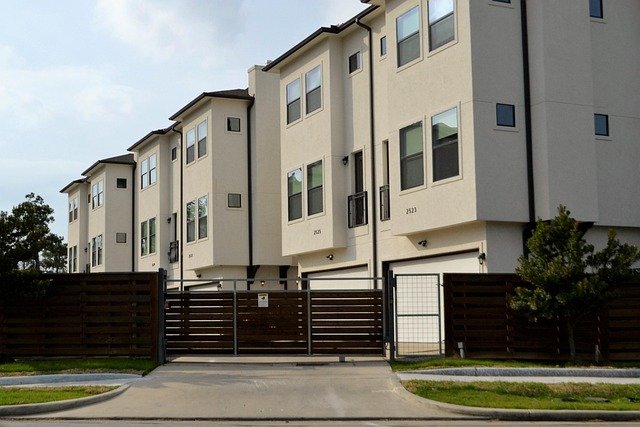Abandoned Homes: Real Estate Risks and Opportunities
Abandoned houses are more than spooky sights; they reflect a tangled mix of economic hardship, legal complexity, and neighborhood change. This article explores why homes are left vacant, the effects on communities, legal pitfalls, and practical ways investors, nonprofits, and governments can revive these properties for housing, community use, or redevelopment.

Introduction
Vacant and abandoned homes are a visible symptom of broader economic, social, and legal forces. Beyond their appeal to urban explorers, these properties affect neighborhood health, public safety, and local markets. Understanding the reasons they are left empty, the consequences that follow, and the practical options for reusing or acquiring them helps communities and investors make informed decisions.
Why homes become abandoned
Several factors can lead to a house being left unoccupied. Financial stress, such as job loss or insolvency, frequently forces owners to walk away. Properties inherited by family members who lack the resources or desire to maintain them may go vacant. Structural damage from natural disasters or long-term industrial decline in an area can make homes unlivable. Demographic shifts, neighborhood disinvestment, or prolonged vacancy due to poor market conditions also contribute. Identifying these root causes is essential for designing interventions that are appropriate and effective.
How abandoned properties affect neighborhoods
Neglected homes can create a range of problems for nearby residents and local authorities. They often detract from curb appeal and can depress surrounding property values. Abandoned structures are more likely to attract vandalism, illegal dumping, or other criminal activity, and they can become safety hazards due to structural decay. Additionally, a cluster of vacant houses can erode community morale and trigger a downward spiral of further neglect and disinvestment. Responding early to vacancy is usually less costly and more effective than letting decline spread.
Options for repurposing and rehabilitation
Transforming vacant houses can yield community and economic benefits when stakeholders collaborate. Typical approaches include:
- Converting units into affordable or workforce housing to address local housing shortages
- Turning lots or houses into community assets like pocket parks, urban farms, or shared workspaces
- Running urban homesteading or owner-occupancy initiatives that transfer properties to individuals prepared to renovate and live in them
- Using buildings temporarily for art projects, pop-up events, or cultural programming to activate spaces and raise awareness
Successful projects commonly combine funding, technical assistance, and legal clarity. Public-private partnerships and nonprofit-led efforts often provide the coordination and subsidies needed to make renovation feasible, especially when major repairs are required.
Legal considerations to keep in mind
The laws and regulations that touch abandoned properties are varied and can be intricate. Important legal topics include:
- Squatters and adverse possession: Long-term occupancy by someone other than the owner can create legal claims depending on local statutes
- Mortgage foreclosures: Properties with outstanding loans may be subject to bank repossession and other foreclosure procedures
- Code enforcement and nuisance ordinances: Cities may have rules about maintaining vacant properties and can levy fines or take corrective action
- Tax liens and sale procedures: When property taxes are unpaid, municipalities may auction tax liens or the properties themselves to recover revenue
Because statutes and processes differ by jurisdiction, working with local counsel or municipal officials is often necessary to resolve title, lien, and ownership questions before investing or refurbishing.
How individuals and investors acquire abandoned houses
There are several common routes to buying or otherwise taking responsibility for vacant properties. Each method carries benefits and risks that should be evaluated carefully:
- Tax lien or tax deed auctions: These sales arise when owners fail to pay property taxes. Investors may acquire properties at lower prices, but title problems and competition are common.
- Bank-owned or REO listings: Lenders sell properties repossessed through foreclosure. These homes can be priced to move quickly but often need extensive repairs.
- Government disposition programs: Local authorities sometimes sell or transfer derelict properties as part of neighborhood revitalization efforts, occasionally offering incentives or assistance.
- Direct outreach: Locating and negotiating with absentee owners or heirs can produce unique opportunities, though tracking owners and completing transactions can be time-consuming.
Comparing acquisition methods
| Method | What it is | Potential upside | Common challenges |
| Tax lien auctions | Purchase of outstanding tax obligations or the property itself | Possibility of below-market acquisition | Competitive bidding, complex title issues, hidden repair costs |
| Bank-owned (REO) listings | Foreclosed homes sold by lenders | Often priced to sell quickly | May require significant renovation and clear title work |
| Government programs | Properties transferred via municipal initiatives | May include incentives, funding, or technical help | Limited availability and eligibility rules |
| Direct negotiation | Contacting owners or heirs for sale | Opportunity for tailored deals or flexible terms | Difficulty locating owners and negotiating transfers |
Practical tips before you buy
- Conduct a thorough property inspection and estimate renovation costs before bidding or signing.
- Research liens, outstanding taxes, and any legal encumbrances on title.
- Check local zoning, code enforcement history, and any planned public projects nearby.
- Factor in carrying costs such as taxes, insurance, and security while the property is vacant.
- Consider working with local nonprofits or government programs that can provide grants, low-interest loans, or tax incentives.
A note on costs and timing
Market prices, tax rules, and program availability change over time. Any financial figures, timelines, or local incentives should be independently verified before making a purchase or investment decision.
Conclusion
Abandoned homes are both a symptom of economic and social strain and a potential resource for community renewal. Addressing vacancy successfully requires a mixed strategy: diagnosing the causes, mitigating neighborhood impacts, navigating legal complexities, and choosing the right acquisition or reuse path. When governments, nonprofits, residents, and investors coordinate, neglected properties can be transformed from liabilities into valuable assets that strengthen neighborhoods and expand housing options.






